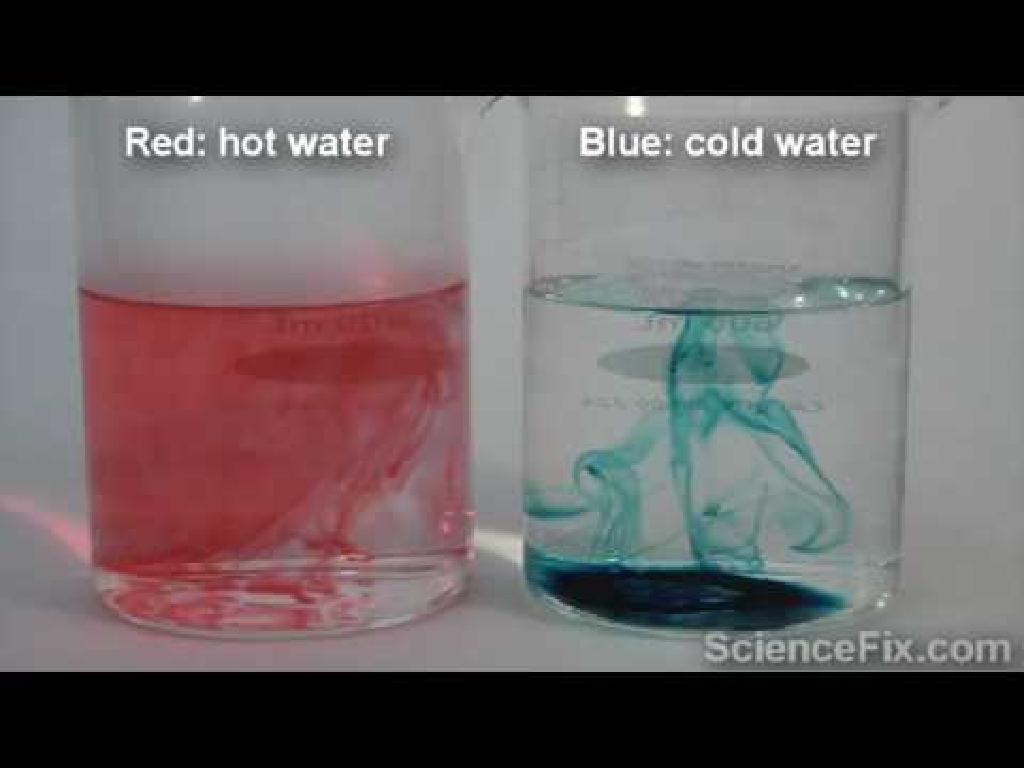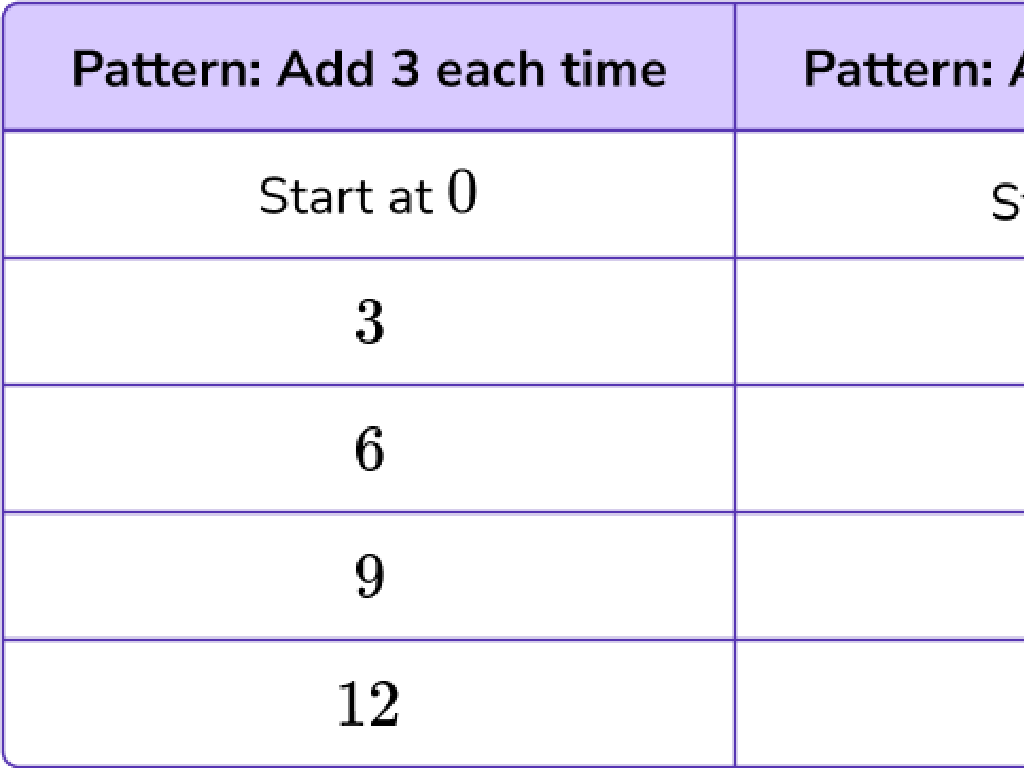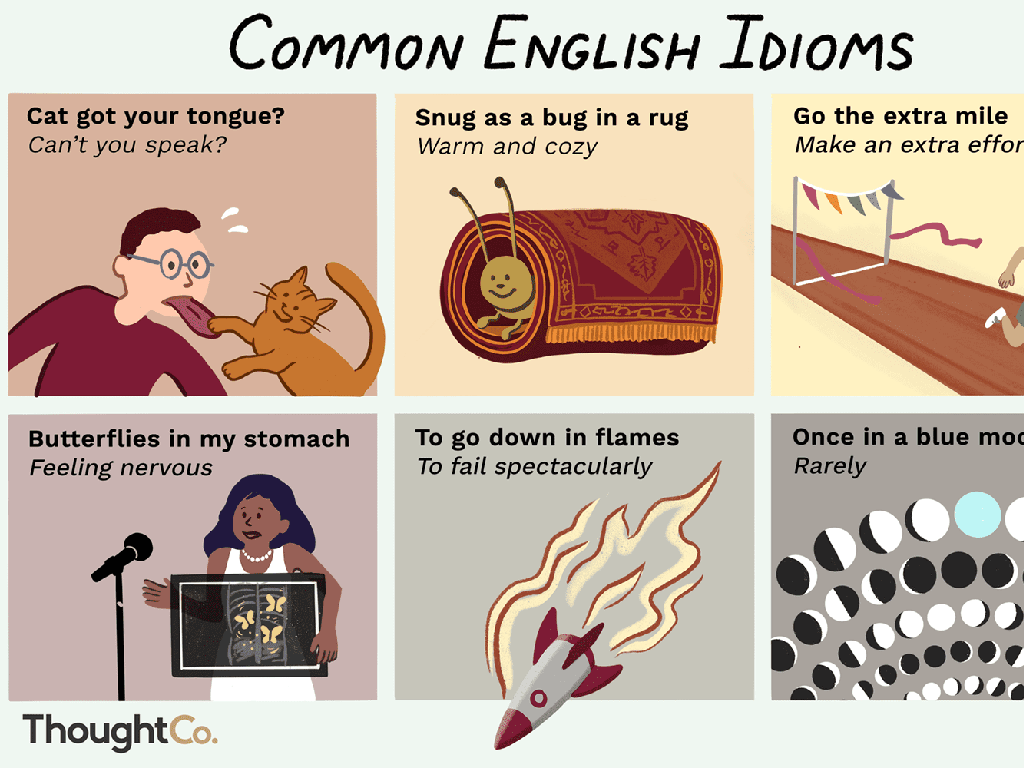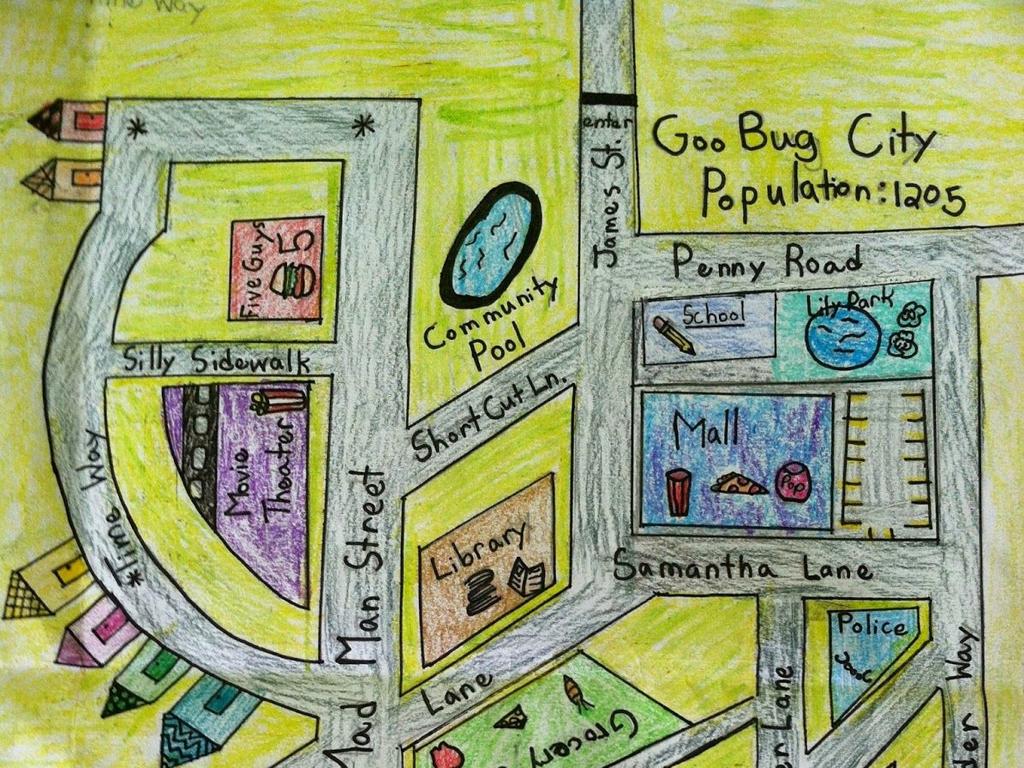Sort Sensory Details
Subject: Language arts
Grade: Fifth grade
Topic: Sensory Details
Please LOG IN to download the presentation. Access is available to registered users only.
View More Content
Exploring Sensory Details
– What are sensory details?
– Descriptions that appeal to our senses
– Discover the five senses
– Sight, sound, smell, taste, touch
– Sensory details in writing
– Using senses to make writing vivid
– Enhancing stories with senses
– Examples: The silky fur, the thunderous roar
|
This slide introduces the concept of sensory details and their importance in writing. Sensory details are descriptive elements that pertain to the five senses and are used to engage a reader’s senses to create a vivid picture in their mind. Discuss how each sense can be used to enhance storytelling and make experiences more relatable. Provide examples of sensory details for each sense and encourage students to think of their own. In the next class, students can practice incorporating sensory details into their writing to see how it can improve their narratives and descriptions.
Exploring Sensory Details in Writing
– Define Sensory Details
– Descriptions that appeal to our senses: sight, sound, smell, touch, taste
– Examples in literature
– ‘The cinnamon buns smelled warm and spicy’ – appeals to smell and touch
– Importance in descriptions
– They make writing vivid and paint a picture in the reader’s mind
– Engaging reader senses
– Sensory details help readers experience the story as if they were part of it
|
This slide introduces the concept of sensory details, which are crucial for creating rich, immersive experiences in writing. By defining sensory details, students learn how these descriptions are tied to the five senses. Provide examples from well-known literature where sensory details enhance the narrative. Discuss why including sensory details is important in descriptive writing, such as helping to set the scene and mood, making the writing more engaging, and allowing the reader to feel more connected to the story. Encourage students to think of their favorite stories and the sensory descriptions that made those stories memorable for them.
Exploring Sensory Details
– Sight: Visual imagery in text
– Imagine a vivid scene with colors and shapes
– Sound: Auditory elements in stories
– Listen for noises or dialogue that adds realism
– Smell: Descriptions that evoke scent
– Identify words that make you recall a smell
– Taste: Words that convey flavors
– Think of language that makes your mouth water
– Touch: Describing textures and feelings
– Feel the surface or emotion described by the author
|
This slide aims to help students understand how sensory details enhance writing. Encourage them to think of sensory details as tools to make their writing more vivid and engaging. For sight, they should consider how visual descriptions can create a picture in the reader’s mind. Sound can add depth to a scene, whether it’s the quiet rustling of leaves or the loud hustle of a city. Smell often evokes strong emotions and memories, so choosing the right olfactory details can be powerful. Taste can make writing more relatable and enjoyable, as everyone connects with food. Lastly, touch includes both physical textures and emotional feelings, which can draw readers closer to the characters. Have students practice by writing descriptive paragraphs that focus on each sense.
Identifying Sensory Details in Texts
– Finding sensory details in reading
– Look for words that describe how things look, sound, smell, taste, or feel
– Practice with a sample paragraph
– We’ll identify sensory words together in a paragraph
– Discuss our findings as a class
– Share different details you found with classmates
– Understand the impact of sensory details
– How do these details help us ‘experience’ the story?
|
This slide is aimed at teaching students how to identify sensory details which are descriptions that appeal to our senses and help us to imagine the scene in a text. Start by explaining what sensory details are and how they enhance writing. Then, provide a paragraph for students to practice finding sensory words. After the individual task, facilitate a group discussion where students can compare and share the sensory details they’ve identified. This will help them see how different readers can pick up on different aspects of the same text. Finally, discuss as a class how sensory details contribute to the overall experience of reading and understanding the story or text.
Enhancing Writing with Sensory Details
– Crafting sentences with sensory details
– Use words that describe what we see, hear, smell, taste, and touch
– Enhance writing with sensory language
– Sensory language makes stories come alive
– Activity: Write descriptive sentences
– Create sentences that paint a vivid picture
– Use each of the five senses
– Sight, sound, smell, taste, touch: include them all
|
This slide introduces the concept of using sensory details to make writing more engaging and vivid. Explain that sensory details are words that describe our experiences with the five senses. Show examples of sentences without sensory details and then add them to demonstrate the difference. For the activity, guide students to write their own sentences focusing on each sense. Provide a simple scenario for them to describe, like a day at the beach or a walk in a park. Encourage creativity and the use of new vocabulary. After the activity, students can share their sentences and discuss the effectiveness of their sensory descriptions.
Sorting Sensory Details
– Learn to categorize sensory details
– Sensory details relate to our five senses
– Interactive activity: Sort by senses
– Organize details into sight, sound, smell, taste, touch
– Discuss sorting’s role in writing
– Sorting details helps us understand their importance
– Enhance descriptive paragraphs
– Using sorted details makes our writing come alive
|
This slide introduces the concept of sensory details and their categorization, which is crucial for enhancing descriptive writing. Begin by explaining that sensory details are words or phrases that describe how we see, hear, smell, taste, and touch. The interactive activity will involve students sorting given details into the correct sensory category. Discuss how this organization aids in constructing vivid imagery in their writing. Emphasize that by sorting sensory details, students can more effectively select the right details to include in their paragraphs to make their writing more engaging and descriptive. Encourage students to think of their favorite place or food and the sensory details associated with it to prepare for the activity.
Class Activity: Sensory Detail Hunt
– Explore the classroom for sensory details
– Find examples for all five senses
– Record your sensory observations
– Use your notebook to jot down what you see, hear, smell, touch, and taste
– Share your sensory discoveries
– Be ready to discuss what you found with your classmates
|
This activity is designed to engage students in exploring their surroundings to identify sensory details, which are crucial for descriptive writing. Encourage students to quietly walk around the classroom and note down specific details they observe that relate to sight, sound, smell, touch, and taste. Provide them with a worksheet or a section in their notebooks to record their findings. After the hunt, facilitate a discussion where students can share and compare their observations. This will help them understand how sensory details can paint vivid pictures in the reader’s mind. Possible variations of the activity could include finding sensory details in a piece of text, during a nature walk, or from a memory.
Reflecting on Sensory Details
– Recap: What are sensory details?
– Sensory details describe how we sense things: see, hear, smell, taste, touch
– Why sensory details matter
– They add depth and allow readers to fully ‘experience’ the story
– Sensory details enhance writing
– Using sensory details, writing becomes vivid and rich
– Homework: Descriptive paragraph
|
As we conclude, remind students that sensory details involve all five senses and are crucial for creating a vivid picture in the reader’s mind. Discuss how these details make stories more engaging and memorable. For homework, students should write a paragraph describing a scene or object using sensory details from their sensory hunt activity. This will help them practice incorporating sensory language into their writing. Encourage creativity and the use of diverse senses to make their paragraphs come alive. The goal is for students to understand the power of sensory details in making their writing more immersive.






